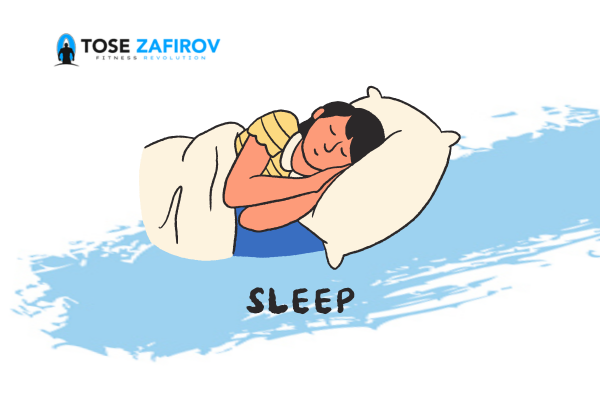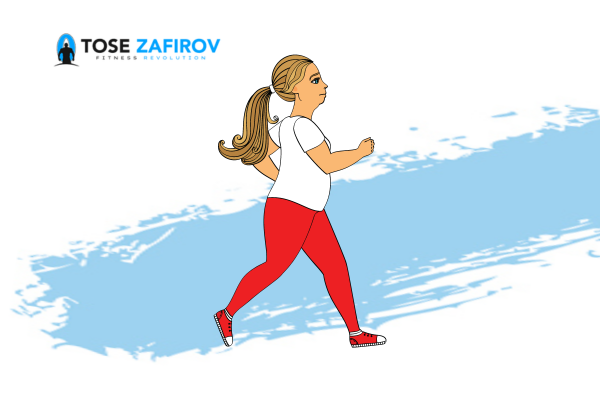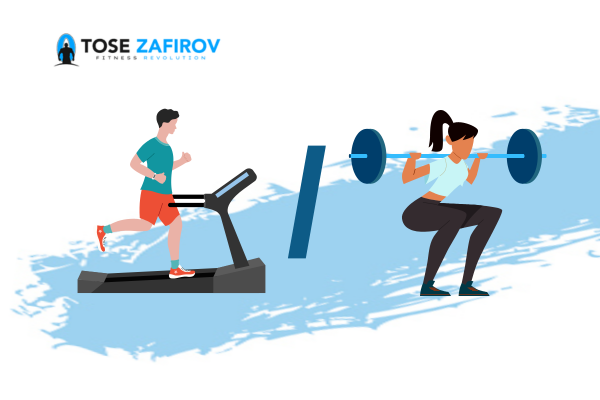A good night’s sleep is just as important as regular exercise and a healthy diet.
Research shows that poor sleep has immediate negative effects on your hormones, exercise performance, and brain function.
It can also cause weight gain and increase disease risk in both adults and children.
In contrast, good sleep can help you eat less, exercise better, and be healthier.
Over the past few decades, both sleep quality and quantity has declined. In fact, many people regularly get poor sleep.
If you want to optimize your health or lose weight, getting a good night’s sleep is one of the most important things you can do.
Here are 17 evidence-based tips to sleep better at night.
Key Takeaways:
- Increase exposure to bright light during the day to regulate your circadian rhythm and improve daytime energy and nighttime sleep quality.
- Reduce blue light exposure in the evening to promote melatonin production and prepare your body for sleep.
- Avoid consuming caffeine late in the day to prevent interference with your natural sleep-wake cycle.
- Limit irregular or long daytime naps to avoid disrupting nighttime sleep patterns.
1. Increase bright light exposure during the day
Your body has a natural time-keeping clock known as your circadian rhythm.
It affects your brain, body, and hormones, helping you stay awake and telling your body when it’s time to sleep.
Natural sunlight or bright light during the day helps keep your circadian rhythm healthy. This improves daytime energy, as well as nighttime sleep quality and duration.
In people with insomnia, daytime bright light exposure improved sleep quality and duration. It also reduced the time it took to fall asleep by 83%.
A similar study in older adults found that 2 hours of bright light exposure during the day increased the amount of sleep by 2 hours and sleep efficiency by 80%.
While most research involves people with severe sleep issues, daily light exposure will most likely help you even if you experience average sleep.
Try getting daily sunlight exposure or — if this is not practical — invest in an artificial bright light device or bulbs.
Note
2. Reduce blue light exposure in the evening
Exposure to light during the day is beneficial, but nighttime light exposure has the opposite effect.
Again, this is due to its effect on your circadian rhythm, tricking your brain into thinking it’s still daytime. This reduces hormones like melatonin, which help you relax and get deep sleep.
Blue light — which electronic devices like smartphones and computers emit in large amounts — is the worst in this regard.
There are several popular methods you can use to reduce nighttime blue light exposure. These include:
Wear glasses that block blue light.
Download an app such as f.lux to block blue light on your laptop or computer.
Install an app that blocks blue light on your smartphone. These are available for both iPhones and Android models.
Stop watching TV and turn off any bright lights 2 hours before heading to bed.
Pro Tip
Blue light tricks your body into thinking it’s daytime. There are several ways you can reduce blue light exposure in the evening.
3. Don’t consume caffeine late in the day
Caffeine has numerous benefits and is consumed by 90% of the U.S. population.
A single dose can enhance focus, energy, and sports performance.
However, when consumed late in the day, caffeine stimulates your nervous system and may stop your body from naturally relaxing at night.
In one study, consuming caffeine up to 6 hours before bed significantly worsened sleep quality.
Caffeine can stay elevated in your blood for 6–8 hours. Therefore, drinking large amounts of coffee after 3–4 p.m. is not recommended, especially if you’re sensitive to caffeine or have trouble sleeping.
If you do crave a cup of coffee in the late afternoon or evening, stick with decaffeinated coffee.
Pro Tip
Caffeine can significantly worsen sleep quality, especially if you drink large amounts in the late afternoon or evening.
4. Reduce irregular or long daytime naps
While short power naps are beneficial, long or irregular napping during the day can negatively affect your sleep.
Sleeping in the daytime can confuse your internal clock, meaning that you may struggle to sleep at night.
In fact, in one study, participants ended up being sleepier during the day after taking daytime naps.
Another study noted that while napping for 30 minutes or less can enhance daytime brain function, longer naps can harm health and sleep quality.
However, some studies demonstrate that those who are used to taking regular daytime naps don’t experience poor sleep quality or disrupted sleep at night.
If you take regular daytime naps and sleep well, you shouldn’t worry. The effects of napping depend on the individual.
Note
Long daytime naps may impair sleep quality. If you have trouble sleeping at night, stop napping or shorten your naps.
5. Try to sleep and wake at consistent times
Your body’s circadian rhythm functions on a set loop, aligning itself with sunrise and sunset.
Being consistent with your sleep and waking times can aid long-term sleep quality.
One study noted that participants who had irregular sleeping patterns and went to bed late on the weekends reported poor sleep.
Other studieshave highlighted that irregular sleep patterns can alter your circadian rhythm and levels of melatonin, which signal your brain to sleep.
If you struggle with sleep, try to get in the habit of waking up and going to bed at similar times. After several weeks, you may not even need an alarm.
Pro Tip
Try to get into a regular sleep/wake cycle — especially on the weekends. If possible, try to wake up naturally at a similar time every day.
6. Take a melatonin supplement
Melatonin is a key sleep hormone that tells your brain when it’s time to relax and head to bed.
Melatonin supplements are an extremely popular sleep aid.
Often used to treat insomnia, melatonin may be one of the easiest ways to fall asleep faster.
In one study, taking 2 mg of melatonin before bed improved sleep quality and energy the next day and helped people fall asleep faster.
In another study, half of the group fell asleep faster and had a 15% improvement in sleep quality.
Additionally, no withdrawal effects were reported in either of the above studies.
Melatonin is also useful when traveling and adjusting to a new time zone, as it helps your body’s circadian rhythm return to normal.
In some countries, you need a prescription for melatonin. In others, melatonin is widely available in stores or online. Take around 1–5 mg 30–60 minutes before bed.
Start with a low dose to assess your tolerance and then increase it slowly as needed. Since melatonin may alter brain chemistry, it’s advised that you check with a healthcare provider before use.
Note
A melatonin supplement is an easy way to improve sleep quality and fall asleep faster. Take 1–5 mg around 30–60 minutes before heading to bed.
7. Consider these other supplements
Several supplements can induce relaxation and help you sleep, including:
Ginkgo biloba: A natural herb with many benefits, it may aid sleep, relaxation, and stress reduction, but the evidence is limited. Take 250 mg 30–60 minutes before bed.
Glycine: A few studies show that taking 3 grams of the amino acid glycine can improve sleep quality.
Valerian root: Several studies suggest that valerian can help you fall asleep and improve sleep quality. Take 500 mg before bed.
Magnesium: Responsible for over 600 reactions within your body, magnesium can improve relaxation and enhance sleep quality.
L-theanine: An amino acid, L-theanine can improve relaxation and sleep. Take 100–200 mg before bed.
Lavender: A powerful herb with many health benefits, lavender can induce a calming and sedentary effect to improve sleep. Take 80–160 mg containing 25–46% linalool.
Make sure to only try these supplements one at a time. While they’re not a magic bullet for sleep issues, they can be useful when combined with other natural sleeping strategies.
Note
Several supplements, including lavender and magnesium, can help with relaxation and sleep quality when combined with other strategies.
8. Don’t drink alcohol
Having a couple of drinks at night can negatively affect your sleep and hormones.
Alcohol is known to cause or increase the symptoms of sleep apnea, snoring, and disrupted sleep patterns.
It also alters nighttime melatonin production, which plays a key role in your body’s circadian rhythm.
Another study found that alcohol consumption at night decreased the natural nighttime elevations in human growth hormone (HGH), which plays a role in your circadian rhythm and has many other key functions.
Note
Avoid alcohol before bed, as it can reduce nighttime melatonin production and lead to disrupted sleep patterns.
9. Optimize your bedroom environment
Many people believe that the bedroom environment and its setup are key factors in getting a good night’s sleep.
These factors include temperature, noise, external lights, and furniture arrangement.
Numerous studies point out that external noise, often from traffic, can cause poor sleep and long-term health issues.
In one study on the bedroom environment of women, around 50% of participants noticed improved sleep quality when noise and light diminished.
To optimize your bedroom environment, try to minimize external noise, light, and artificial lights from devices like alarm clocks. Make sure your bedroom is a quiet, relaxing, clean, and enjoyable place.
Pro Tip
Optimize your bedroom environment by eliminating external light and noise to get better sleep.
10. Set your bedroom temperature
Body and bedroom temperature can also profoundly affect sleep quality.
As you may have experienced during the summer or in hot locations, it can be very hard to get a good night’s sleep when it’s too warm.
One study found that bedroom temperature affected sleep quality more than external noise.
Other studies reveal that increased body and bedroom temperature can decrease sleep quality and increase wakefulness.
Around 70°F (20°C) seems to be a comfortable temperature for most people, although it depends on your preferences and habits.
Note
Test different temperatures to find out which is most comfortable for you. Around 70°F (20°C) is best for most people.
11. Don’t eat late in the evening
Eating late at night may negatively affect both sleep quality and the natural release of HGH and melatonin.
That said, the quality and type of your late-night snack may play a role as well.
In one study, a high carb meal eaten 4 hours before bed helped people fall asleep faster.
Interestingly, one study discovered that a low carb diet also improved sleep, indicating that carbs aren’t always necessary, especially if you’re used to a low carb diet.
Pro Tip
Consuming a large meal before bed can lead to poor sleep and hormone disruption. However, certain meals and snacks a few hours before bed may help.
12. Relax and clear your mind in the evening
Many people have a pre-sleep routine that helps them relax.
Relaxation techniques before bed have been shown to improve sleep quality and are another common technique used to treat insomnia.
In one study, a relaxing massage improved sleep quality in people who were ill.
Strategies include listening to relaxing music, reading a book, taking a hot bath, meditating, deep breathing, and visualization.
Try out different methods and find what works best for you.
Note
Relaxation techniques before bed, including hot baths and meditation, may help you fall asleep.
13. Take a relaxing bath or shower
A relaxing bath or shower is another popular way to sleep better.
Studies indicate that they can help improve overall sleep quality and help people — especially older adults — fall asleep faster.
In one study, taking a hot bath 90 minutes before bed improved sleep quality and helped people get more deep sleep.
Alternatively, if you don’t want to take a full bath at night, simply bathing your feet in hot water can help you relax and improve sleep.
Note
A warm bath, shower, or foot bath before bed can help you relax and improve your sleep quality.
14. Rule out a sleep disorder
An underlying health condition may be the cause of your sleep problems.
One common issue is sleep apnea, which causes inconsistent and interrupted breathing. People with this disorder stop breathing repeatedly while sleeping.
This condition may be more common than you think. One review claimed that 24% of men and 9% of women have sleep apnea.
Other common medically diagnosed issues include sleep movement disorders and circadian rhythm sleep/wake disorders, which are common in shift workers.
If you’ve always struggled with sleep, it may be wise to consult your healthcare provider.
Note
There are many common conditions that can cause poor sleep, including sleep apnea. See a healthcare provider if poor sleep is a consistent problem in your life.
15. Get a comfortable bed, mattress, and pillow
Some people wonder why they always sleep better in a hotel.
Apart from the relaxing environment, bed quality can also affect sleep.
One study looked at the benefits of a new mattress for 28 days, revealing that it reduced back pain by 57%, shoulder pain by 60%, and back stiffness by 59%. It also improved sleep quality by 60%.
Other studies point out that new bedding can enhance sleep. Additionally, poor quality bedding can lead to increased lower back pain.
The best mattress and bedding are extremely subjective. If you’re upgrading your bedding, base your choice on personal preference.
It’s recommended that you upgrade your bedding at least every 5–8 years.
If you haven’t replaced your mattress or bedding for several years, this can be a very quick — although possibly expensive — fix.
Note
Your bed, mattress, and pillow can greatly affect sleep quality and joint or back pain. Try to buy a high quality bedding — including a mattress — every 5–8 years.
16. Exercise regularly — but not before bed
Exercise is one of the best science-backed ways to improve your sleep and health.
It can enhance all aspects of sleep and has been used to reduce symptoms of insomnia.
One study in older adults determined that exercise nearly halved the amount of time it took to fall asleep and provided 41 more minutes of sleep at night.
In people with severe insomnia, exercise offered more benefits than most drugs. Exercise reduced time to fall asleep by 55% total night wakefulness by 30%, and anxiety by 15% while increasing total sleep time by 18%.
Although daily exercise is key for a good night’s sleep, performing it too late in the day may cause sleep problems.
This is due to the stimulatory effect of exercise, which increases alertness and hormones like epinephrine and adrenaline.
However, some studiesshow no negative effects, so it clearly depends on the individual.
Pro Tip
Regular exercise during daylight hours is one of the best ways to ensure a good night’s sleep.
17. Don’t drink any liquids before bed
Nocturia is the medical term for excessive urination during the night. It affects sleep quality and daytime energy.
Drinking large amounts of liquids before bed can lead to similar symptoms, though some people are more sensitive than others.
Although hydration is vital for your health, it’s wise to reduce your fluid intake in the late evening.
Try to not drink any fluids 1–2 hours before going to bed.
You should also use the bathroom right before going to bed, as this may decrease your chances of waking in the night.
Note
Reduce fluid intake in the late evening and try to use the bathroom right before bed.
The bottom line
Improving sleep quality and duration is essential for overall health and well-being. By implementing these evidence-based strategies, you can optimize your sleep naturally and wake up feeling refreshed and rejuvenated each day.




